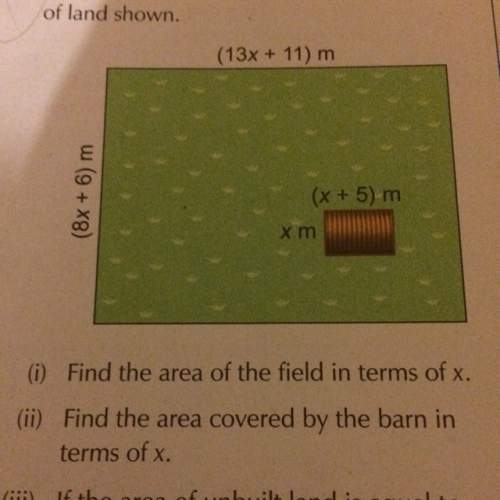
Mathematics, 20.04.2020 21:52 florochoa217
Graph y=\dfrac{2}{3}xy= 3 2 xy, equals, start fraction, 2, divided by, 3, end fraction, x. Which of the following statements are true? Choose all answers that apply: Choose all answers that apply: (Choice A) A The equation represents a proportional relationship. (Choice B) B The unit rate of change of yyy with respect to xxx is \dfrac{2}{3} 3 2 start fraction, 2, divided by, 3, end fraction. (Choice C, Checked) C The slope of the line is \dfrac{2}{3} 3 2 start fraction, 2, divided by, 3, end fraction. (Choice D) D A change of 333 units in xxx results in a change of 222 units in yyy. (Choice E) E A change of 333 units in xxx resu

Answers: 1
Another question on Mathematics

Mathematics, 21.06.2019 14:00
30 in the diagram line e and made parallel to each other and line p and q are transversal. use properties of special angles formed by parallel lines and their transversals to find the missing angle measures. m< 3=65 m< 15=120 m< 7= m< 4= m< 6= m< 1= m< 16= m< 18= m< 21= m< 10= m< 11= m< 12=
Answers: 1

Mathematics, 21.06.2019 17:00
Select all of the quadrants that the parabola whose equation is y=√x-4 (principal square root) occupies. i ii iii iv
Answers: 3

Mathematics, 21.06.2019 17:30
Lems1. the following data set represents the scores on intelligence quotient(iq) examinations of 40 sixth-grade students at a particular school: 114, 122, 103, 118, 99, 105, 134, 125, 117, 106, 109, 104, 111, 127,133, 111, 117, 103, 120, 98, 100, 130, 141, 119, 128, 106, 109, 115,113, 121, 100, 130, 125, 117, 119, 113, 104, 108, 110, 102(a) present this data set in a frequency histogram.(b) which class interval contains the greatest number of data values? (c) is there a roughly equal number of data in each class interval? (d) does the histogram appear to be approximately symmetric? if so,about which interval is it approximately symmetric?
Answers: 3

Mathematics, 21.06.2019 23:30
Aprisoner is trapped in a cell containing three doors. the first door leads to a tunnel that returns him to his cell after two days of travel. the second leads to a tunnel that returns him to his cell after three days of travel. the third door leads immediately to freedom. (a) assuming that the prisoner will always select doors 1, 2 and 3 with probabili- ties 0.5,0.3,0.2 (respectively), what is the expected number of days until he reaches freedom? (b) assuming that the prisoner is always equally likely to choose among those doors that he has not used, what is the expected number of days until he reaches freedom? (in this version, if the prisoner initially tries door 1, for example, then when he returns to the cell, he will now select only from doors 2 and 3.) (c) for parts (a) and (b), find the variance of the number of days until the prisoner reaches freedom. hint for part (b): define ni to be the number of additional days the prisoner spends after initially choosing door i and returning to his cell.
Answers: 1
You know the right answer?
Graph y=\dfrac{2}{3}xy= 3 2 xy, equals, start fraction, 2, divided by, 3, end fraction, x. Which of...
Questions



Mathematics, 25.01.2021 03:40


Mathematics, 25.01.2021 03:40

Mathematics, 25.01.2021 03:40

Mathematics, 25.01.2021 03:40



Mathematics, 25.01.2021 03:40


Mathematics, 25.01.2021 03:40


Mathematics, 25.01.2021 03:40

Mathematics, 25.01.2021 03:40


Computers and Technology, 25.01.2021 03:40

Mathematics, 25.01.2021 03:40





